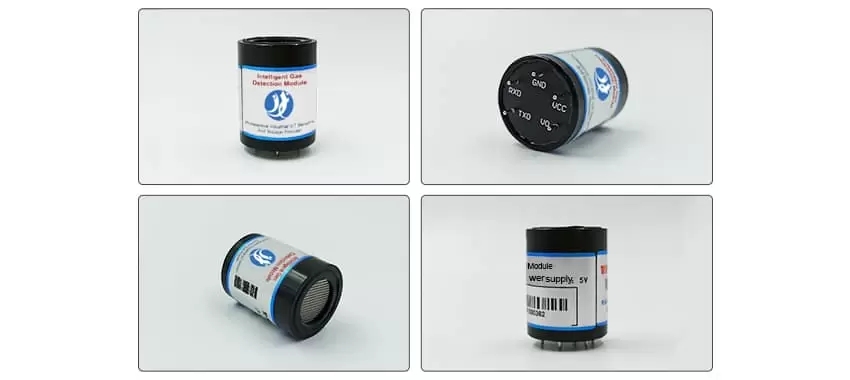Introduction to electrochemical sensors:
Combustible gas sensors are widely used in many fields. In the fixed combustible gas alarm market, they are mainly distributed in coal mines, petroleum and petrochemical fields.Electrochemical sensor: it is made of film electrode and electrolyte. The gas concentration signal decomposes the electrolyte into positive and negative charged ions and transmits the signal through the electrode.
Its advantages are: fast response, accuracy (can be used for ppm level), good stability, quantitative detection, but short life (more than or equal to two years). It is mainly suitable for the detection of toxic gases. At present, this type of sensor is used in most toxic gas detection in the world.
Electrochemical gas sensor is used to detect the voltage or current on the electrode to sense the type and concentration of gas (partial pressure) when the gas reacts on the electrode (including oxidation and reduction). The utility model is characterized by an electrolyte (liquid and solid) and a pair or three electrodes in contact with the electrolyte.
(1) The principle of galvanic cell gas sensor is the same as that of dry cell, but the carbon manganese electrode is replaced by gas electrode. In the case of an oxygen sensor, oxygen is reduced at the cathode and electrons flow through the ammeter to the anode, where lead is oxidized. The magnitude of the current is directly related to the concentration of oxygen. This kind of sensor can detect oxygen effectively.
(2) The principle of this sensor is different from that of the galvanic cell sensor. Its electrochemical reaction is forced by the current. It is a real Coulometric Sensor. This kind of sensor has been successfully used in the detection of carbon monoxide, hydrogen sulfide, hydrogen, ammonia, hydrazine and other gases. It is the mainstream sensor of toxic and harmful at present.
Electrochemical gas sensors are widely used in chemical, mining, military and other industries, such as safety detection, environmental monitoring, production process control, etc. This electrochemical gas sensor has the advantages of small volume, fast detection speed, accuracy, portability, direct detection and continuous detection, which is superior to the optical and spectral gas detection methods in the past. It has important practical significance for improving human living environment and protecting people’s physical and mental health, so it has a good market prospect.

Carbon monoxide electrochemical gas sensor
Electrochemical gas detection sensor, three-electrode structure design, built-in high-precision electrochemical sensor, through the circuit of gas concentration signal output to the digital signal customers need.
Sensor internal precision amplification, to deal with the noise processing, temperature compensation, colleagues before delivery every sensor through standard calibration gas processing, is a mature technology and the excellent electrochemical detection circuit design, design and manufacture of gas sensor, commonality ensure that customers receive sensor module directly output available and accurate information of gas concentration.

SO2 gas sensor
The sulfur dioxide electrochemical gas sensor utilizes the principle of electrochemical gas detection and adopts a three-electrode structure design. The equipment has a built-in high-precision electrochemical gas sensor, which oxidizes or reduces sulfur dioxide gas at the electrode to form a current, and the concentration of sulfur dioxide gas can be determined by detecting the magnitude of the current. The sulfur dioxide sensor has high-precision amplification, noise removal processing, and temperature compensation processing inside. The electrochemical sulfur dioxide sensor has the characteristics of high response accuracy and good consistency.More gas monitoring equipment welcome to consult JXCT.